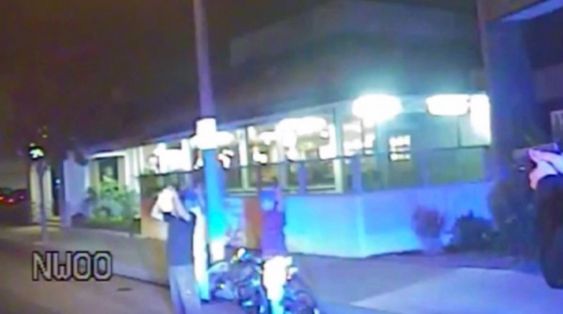LOS ANGELES (AP) — A judge’s decision to release videos showing police killing an unarmed California man doesn’t mean it will be easier for the public to get such footage. In fact, it shows police will do all they can to keep recordings secret.
Even after U.S. District Judge Stephen V. Wilson ruled Tuesday in favor of news media companies that the First Amendment required unsealing the evidence in a lawsuit, the city of Gardena took its aggressive fight to shield the footage from view to a higher court.
“We have serious privacy concerns as it relates to the release of police videos in general,” Gardena Police Chief Ed Medrano said in a statement after the ruling. “Although the video has been released, we are still moving forward with our appeal because we are concerned about the broader implications of this decision.”
The ruling comes amid a broader debate about whether public accountability requires disclosure of video of officers using force recorded by a growing number of cameras worn on police uniforms and mounted in their cruisers. Police want to keep footage under wraps as evidence exempt from disclosure and to protect the privacy of people caught on camera.
Video showing the fatal encounter with Ricardo Diaz-Zeferino was released after an attorney for The Associated Press, the Los Angeles Times and Bloomberg argued the videos should be unsealed because of the intense public scrutiny of police shootings nationwide and the public’s interest in knowing what happened.
Wilson agreed, saying people should be able to see why the city paid $4.7 million to settle a lawsuit with Diaz-Zeferino’s family and another man wounded in the shooting “only strengthens the public’s interest in seeing the videos.” He also said any privacy concerns were outweighed because the victims wanted the footage released.
The city of Gardena had argued that the videos were protected from disclosure by an exemption in the California Public Records Act, and that releasing them could harm the officers and dissuade other cities from using video if they thought it would be broadcast publicly.
Peter Scheer, executive director of the First Amendment Coalition, said the ruling could have a positive influence on public policy discussions over what can be disclosed, in part because video tended to support the reason Gardena police cited for shooting Diaz-Zeferino.
“It reinforced for us what an extraordinary tragedy it was,” Scheer said. “It also gives greater credence and legitimacy to the story that police have been telling about this. Not that it wasn’t a horrible mistake, but if you looked at what I saw, you didn’t see rogue cops looking for someone to kill on the street.”
Diaz-Zeferino and two friends had been stopped by police investigating a bicycle theft. The bike belonged to his brother, and the other men said Diaz-Zeferino was trying to tell officers they were looking for the bike.
He was shot eight times after repeatedly dropping his hands despite police orders to keep them up.
Three officers said they fired because they feared he was reaching for a weapon






